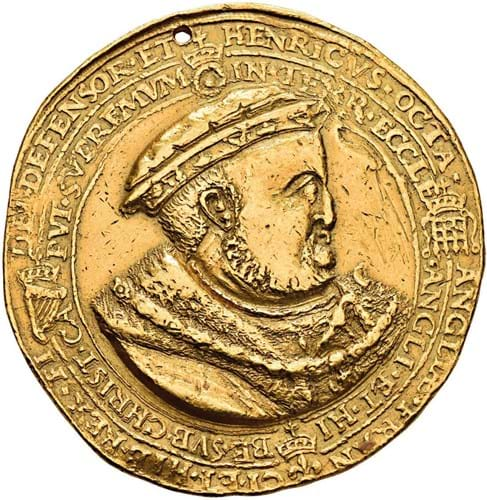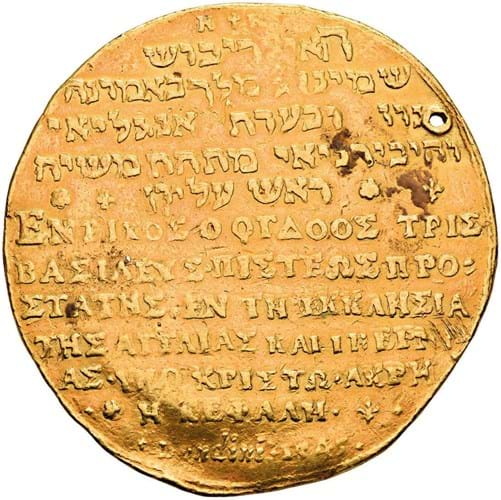
It was hammered down at Sfr260,000 (£205,400) Lugdunum in Solothurn on June 9.
The Supremacy medal was struck in 1545, a decade after the formal completion of ‘the king’s great matter’ – his divorce from Catherine of Aragon and the break with Rome.
Designed by chief engraver Henry Bayse (or Basse), it shows a bust portrait of the king and an inscription in Latin reading: Henry, eighth king of England, France and Ireland, defender of the faith, and on Earth, supreme head of the Church of England and Ireland under Christ.
The reverse proclaims the king’s title in both Hebrew and Greek, a subtle reference to the original forms of the Old and New Testaments, that underpinned the reformation in Europe.
Weighing 61g with a bullion value almost five times higher than the sovereign, the largest English gold coin struck at the time, this is considered the first English medal of the Renaissance.
It is thought they were given to favoured courtiers or as diplomatic gifts. This specimen has been drilled for use as a pendant. It is one of only five known in gold, the other four held in UK museums.

The reverse of the gold medal proclaiming the king’s title in both Hebrew and Greek - Sfr260,000 (£205,400) Lugdunum on June 9.
Estimated to bring SFr75,000, it was part of a group of six gold and silver Renaissance medals that come by descent from the collection of Martine, Comtesse de Béhague (1870-1939), one of the most important French art collectors, numismatists and benefactors of the early 20th century.
The consignor to Lugdunum will donate the proceeds towards the restoration of Notre Dame in Paris.





